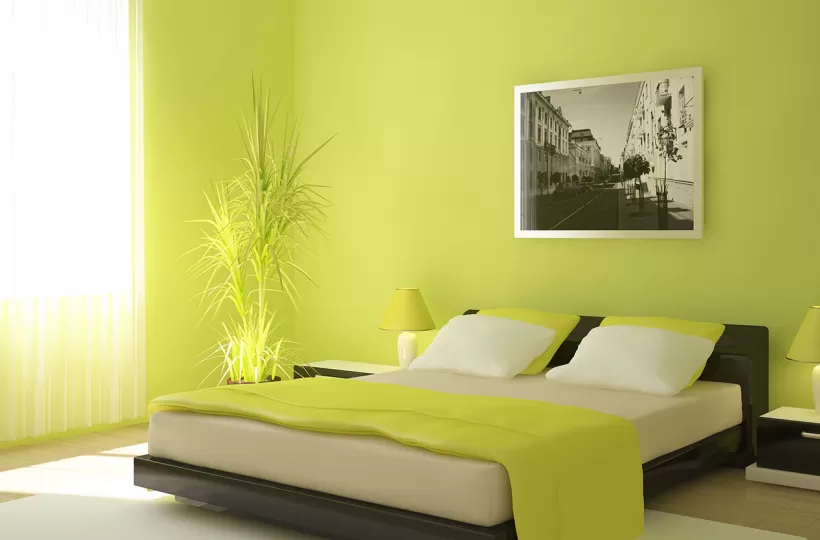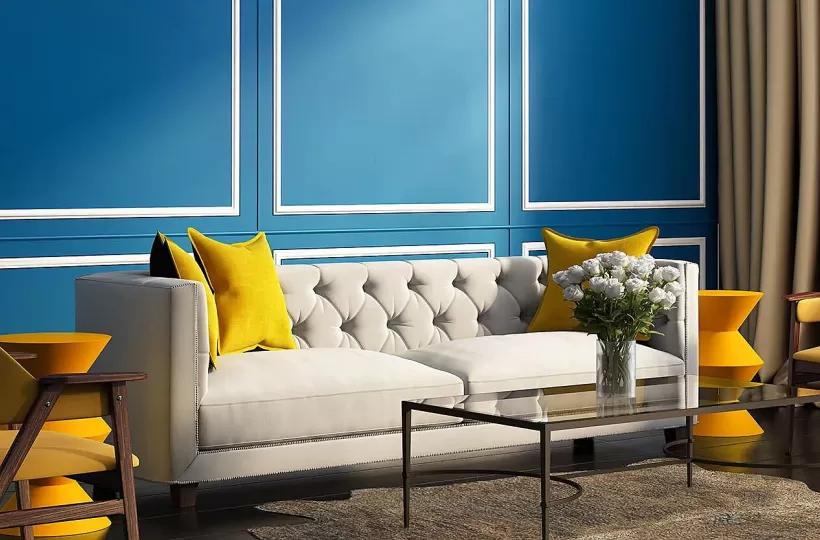
What Is Wall Putty? Exploring Its Meaning and Applications

Create Your Dream Home With Our Painting Experts
Fill the form below to book a free site evaluation by Nerolac Nxtgen painting Services expert
Many homeowners struggle to get flawless wall finishes when renovating. The solution is wall putty, a versatile material that fills cracks and evens surfaces for painting. This article explores the putty meaning, its different types, and how to use it properly in home projects to smooth imperfections.
Discover the meaning of putty, a key product for upgrading your walls
What is Putty?
When we define "Putty," we encompass any material with high plasticity and malleability. Putties have been designed for crack sealing and gap-filling purposes and are intended to smooth uneven surfaces. The earlier putties were basically made of chalk, clay, and linseed oil. Some components of newer putties comprise synthetic ingredients like polymers, thereby enhancing the properties of the putty.
Understanding the Meaning of Wall Putty
White cement-based putty designed for wall surfaces, also known as white cement putty or cement putty, is called wall putty. White cement forms the critical binding material of wall putty.
Some polymer and acrylic compounds add further strength and flexibility to the putty. Fine filler particles like quartz improve the viscosity and smoothness of the applied coat of putty.
Wall putty is primarily formulated to dry to an ultra-smooth finish and bonds firmly with the wall surface on which it is applied. It simply covers small cracks, holes, and minor surface irregularities on plastered or concrete walls.
Also Read: What is wall putty & how to use it the best way?
Types of Wall Putty
Wall putty generally falls into the following main categories:
1. Cement Wall Putty
Cement wall putty is ideal for repairing concrete and masonry surfaces. Available in powder form, it must be mixed with water to achieve a peanut butter-like consistency. This type is applied with a putty knife and requires a day to dry before painting. Cement putty gives a long-lasting, smooth finish, making it an ideal solution for concrete structures. With quality products like Nerolac Cement Putty, cement wall putty provides a crack-free, continuous surface for paints.
2. Acrylic Wall Putty
Acrylic wall putty, available in ready-to-use and powder forms, can be used on plaster and drywall surfaces. Known for its smooth finish, it can be tinted to match the wall paint. However, it is less durable than cement putty and may chip or crack over time. For those looking for a ready-mix option with a superior finish, Nerolac Wall Putty Acrylic offers a highly effective solution.
Benefits and Uses of Wall Putty
The following are some of the main benefits of using wall putty:
- Wall putty effectively fills in cracks, holes, uneven surfaces and other imperfections in plaster or concrete walls. It provides a smooth, uniform painting surface for both interior and exterior surfaces. This allows for the preparation of new walls for paint or the renovation of old damaged walls.
- The putty finish conceals minor underlying flaws in the wall structure, such as hairline cracks, small holes, rough patches, etc. It gives the walls a seamless look that enhances their overall aesthetic appeal.
- An essential advantage of wall putty is its water-resistant properties. It forms a durable and moisture-proof base that prevents water seepage into walls. This protects against paint peeling and damage from moisture ingress through cracks.
- Paints applied on the putty surface have better coverage and a long-lasting finish without uneven faded patches. The putty base prevents paint chipping and flaking caused by underlying plaster or masonry cracks.
- Wall putty improves paint adhesion and life by providing a smooth, uniform undercoat for the paint to hold on to. The putty finish also better reflects light for enhanced aesthetics.
- Wall putty can be easily applied to diverse materials like concrete, plaster, brick, block, wood and metal walls. It is suitable for both interior home walls and exterior building facades.
- The putty gives a professional, seamless finish at an affordable cost. It is a versatile, durable and moisture-proof solution for repairing and preparing damaged or new wall surfaces for painting.
Also Read: Different Types of Wall Putty
The Process of Applying Wall Putty
Applying wall putty involves several key steps:
- Prepare the surface: Clean the wall thoroughly to remove dirt, dust, and loose materials.
- Mix the putty: If you're using a cement-based product, like Nerolac Cement Putty, follow the manufacturer’s instructions to achieve the right consistency.
- Application: Use a putty knife to apply the mixture in thin layers, smoothing it evenly. It’s essential to let each layer dry before sanding it for a flawless, smooth finish.
- Painting: Once the putty is completely dry and smooth, you can apply your paint for a superior finish.
Alternative Solutions for Smoothing Walls
While wall putty is the most popular solution, here are some alternatives to consider:
- Joint Compound: Also known as drywall mud, joint compound is suitable for minor repairs on gypsum drywall surfaces. It dries faster but has lesser strength than wall putty.
- Epoxy Putty: Epoxy putties offer very high strength and water resistance. However, they are challenging to apply and expensive.
- Cement Skim Coat: A thin coat of cement plaster can be applied but may crack over time. It requires specialised skills.
- Popcorn Ceilings: Spray-on popcorn textures can hide imperfections but reduce aesthetics. They are difficult to paint over.
- Wallpaper: Pre-pasted wallpapers provide decorative coverage but need expertise for installation. They are less durable than wall putty.
Also Read: How to apply wall putty & precautions?
Conclusion
Wall putty is an indispensable product for construction and renovation applications. It effectively hides surface flaws and provides a durable, ultra-smooth base for paints. White cement and acrylic-based putties are popular choices. When applied correctly, wall putty enhances the finish quality and life of the paintwork. It is a value-for-money investment that upgrades the look of residential or commercial spaces. Consider applying wall putty for best painting results.
Nerolac Paints, a leading paint company in India offers a wide range of wall paint colours & painting services & solutions for homes & offices.

Colour Combination for Walls: 10 Beautiful House Colour Combination Ideas
A Guide To Trending Colour Combinations For Walls With Images
12 Stylish Green Colour Combinations and Photos
Green Colour Combinations
What Colours Match with Blue? 14 Colour Combinations with Blue for Your Home
Blue is a universally popular colour for décor and design
-
Recent Blogs
- 10 Bedroom Ceiling Colour Ideas To Try in 2024
- What Are Warm Colours? Exploring Warm Colour Schemes for Interior Walls
- Top 10 Wall Structure Design and Painting Ideas for Modern Homes
- Top 10 Wall Paints for Wood Wall Designs to Enhance Modern Interiors
- Top 10 Living Room Wall Decor Ideas with Colour to Elevate Your Space
Get in Touch
Looking for something else? Drop your query and we will contact you.
Get in Touch
Looking for something else? Drop your query and we will contact you.
Popular Searches
Get in Touch
Looking for something else? Drop your query and we will contact you.


